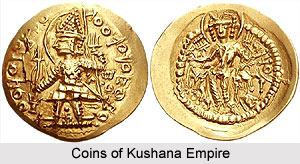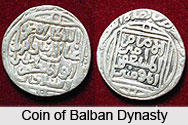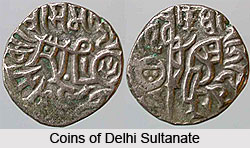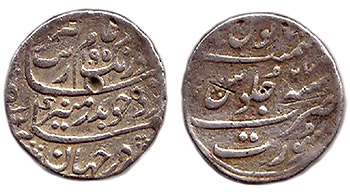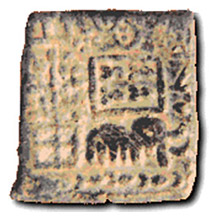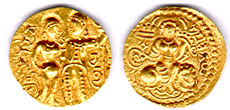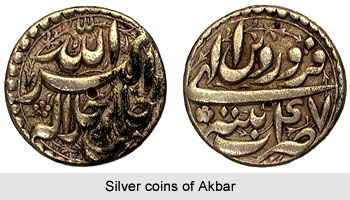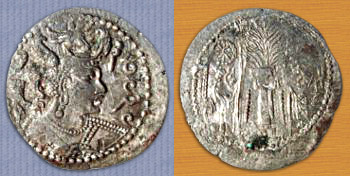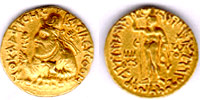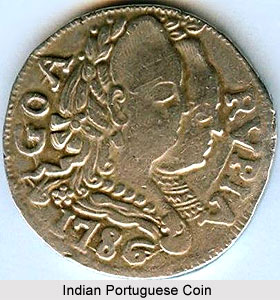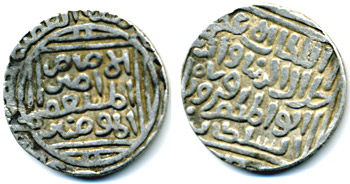 Coinage system in India under Iltutmish possessed some distinctive features. By comparing Chahada`s coins with Iltutmish`s bull-and-horseman coins, some major dissimilarity can be observed. The nose of the bull is hooked on Iltutmish`s coins, the outer tines of the trident on the bull`s rump are crescent-shaped or the trident is replaced totally by other patterns or numerals on Iltutmish`s coins. It is generally agreed that Iltutmish was the author of new coinage norms which survived in one form or another. The basic unit of value of the coins under Iltutmish was to be the pure silver tanka, of one tola weight.
Coinage system in India under Iltutmish possessed some distinctive features. By comparing Chahada`s coins with Iltutmish`s bull-and-horseman coins, some major dissimilarity can be observed. The nose of the bull is hooked on Iltutmish`s coins, the outer tines of the trident on the bull`s rump are crescent-shaped or the trident is replaced totally by other patterns or numerals on Iltutmish`s coins. It is generally agreed that Iltutmish was the author of new coinage norms which survived in one form or another. The basic unit of value of the coins under Iltutmish was to be the pure silver tanka, of one tola weight.
From the specimens catalogued by historians, the mean weight of 16 silver tankas of Iltutmish was around 10.688 g, with an upper standard deviation of 10.952 g. The narrow deviation from the ideal minting weight indicates that the silver tankas were intended to be handled in bulk by counting, rather than by weighing. This new coin form or tanka was adopted at Delhi sometime around AD 1220s. The coins in Delhi were executed with standard Islamic format: Arabic legends, reference to the current Caliph, name and titles of the Sultan.
As a fraction of the mean weight or surviving silver tankas of Iltutmish (10.69 g), the ratio is 42.8 to 1. This is confirmed from assays, for the Rajput coin had a net silver content of 0.55 g; while Iltutmish`s coin, called a jital, contained only 0.25 g silver. There was a considerable drop in the silver content of the Delhi billon in Iltutmish`s reign. In effect, Iltutmish had devalued the Dehliwala coins of previous reigns still in circulation, by 50 per cent. Despite a higher silver content, this was a real devaluation. During the transition period when the new currency was still scarce, it was certainly the case that taxes such as the agricultural revenue, transit tolls, etc., were still collected in Dehltwala coins. These would have been reckoned however, as jitals, and thereby artificially depreciated by half. The government could have no intention of re-releasing from the treasury the old coins once gathered, but could afford to have the old and new (as received from circulation), separated so as to melt the former and realise the difference in silver value.
No silver mines lay within the borders of the Delhi kingdom and the nearest traditional source, the Afghan mines, were lost to the Khwarizm Shahs in AD 1216 and eventually were absorbed into the Mongol empire in AD 1222. The disruption of trans-Hindu Kush trade had been temporary, but it was until 1241 that no definite evidence of the resumption of trade between Hindustan and Central Asia could be traced. It is not unlikely that the mining regions had become depopulated during the slaughters of the Mongol invasions, and all silver production ceased. Both the Gujarat and Bengal coasts were occupied by kingdoms hostile to the Turks, and no direct source of silver by sea trade was available to the landlocked sultanate.
It can be specified that Iltutmish was not particularly successful in converting to a heavy pure silver coin. His various billon coinages were plentiful, but the silver tanka rare. The dates of issue of those silver tankas which survive dates back to around AD 1230-35. This was the period when Iltutmish had triumphed over his Turkish rivals and had raided the Chandella and Paramara kingdoms. This infusion of treasure permitted the establishment of the silver currency.
